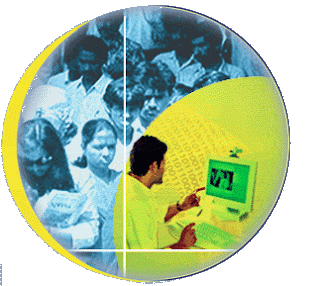
SAN DIEGO--Imagine if your medical records were lost or misplaced. It can cause more than aggravation; it could impact the care you receive. Now, imagine being able to download your own health records -- even X-rays and diagnostic scans -- right into your cell phone or PDA.
The same technology that brings games to life in your cell phone can also help you and your doctor keep track of your health. Gregory Quinn, a computer scientist at the San Diego Supercomputer Center at the University of California, San Diego, says, "We can do quite amazing things in terms of presenting information."
Many of the newer cells phones and PDAs have a graphics chip like the one in your PC. The chip can turn your phone into a virtual medical library, complete with stunning 3D computer graphics and medical scans.
Quinn is developing a program that will allow doctors to view a patient's medical history on mobile devices.
Cardiologist Michael Wright believes mobile medical records will not only help doctors, it will simplify things for patients. Dr. Wright, who is medical director at the LifeScore Clinic in San Diego says: "Right now your medical records are scattered here and there. You don't really have easy access to them."
With Quinn's program, medical notes and patient tests can be downloaded onto a cell phone in just minutes. "Let's say, for example, I had done a scan here and had picked up a narrowed blood vessel coming down the surface of the heart. That would be visible on this 3D model," Dr. Wright says.
All the data on a phone is stored in the memory expansion slot. In these medical phones, however, Instead of music and digital pictures, it could hold a virtual scan of the body and much more. "It really does provide a, an on going, growing medical record that they can always have with them," Dr. Wright tells DBIS.
The 3D mobile medical data program should be available within a year. Quinn's program isn't limited to medical information. He says students will be able to retrieve science and other information on their cell phones during class.
BACKGROUND: Half a billion cell phones are sold each year, and within two years most of these will be inter-connected devices and contain built-in 2D/3D graphics accelerators. Scientists may be able to use these devices to disseminate visual information and scientific data, such as real-time molecular and medical data. For developing countries in particular, the cell phone will become their first and/or primary computing device. It's high-end data visualization for the masses.
MAKING PHONES SMARTER: So-called "smartphones" relate to a single device that can take care of all your handheld computing and communications needs in a single small package, integrating digital photography, cellular communication, calendars and address books, GPS navigation, email, and even play music or games. The biggest advantage is that smartphones allow users to install, configure and run their favorite applications, creating individual, tailor-made service. In contrast, most standard cell-phone software offers only limited configurations for personalizing the device.
ABOUT GRAPHICS ACCELERATORS: A graphics accelerator is a type of video adapter that contains its own microprocessor, enabling higher performance. It has its own memory for storing graphical representations. Among other advantages, graphics accelerators free up the computer's central processing unit. The CPU can do other tasks while the graphics accelerator is processing the graphics. When computation tasks are divided in this way, it is known as "load balancing." Today, graphics accelerators are not just an enhancement, but a necessity, and are bundled automatically into mid-range and high-range computers.
GOING DIGITAL: Digital cell phones use the same radio technology as analog phones, but unlike analog signals, digital signals can be compressed and manipulated to fit more calls onto a given bandwidth. It's also why more cable companies are switching to digital to gain more channels. Using digital cell phones, three to ten digital calls can occupy the same space as a single analog call.





